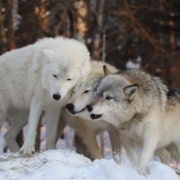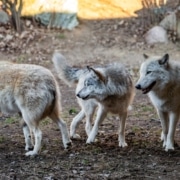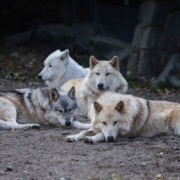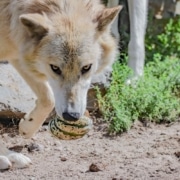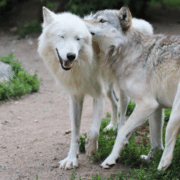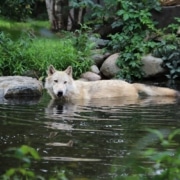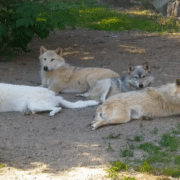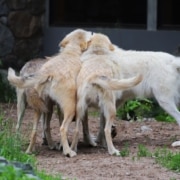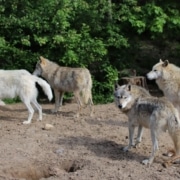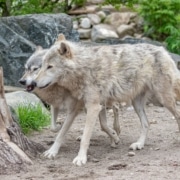As we wrap up 2024, we look back at all the changes that took place at the International Wolf Center. We said a heartbreaking farewell to Axel, one of our ambassador arctic gray wolves. This brought a big change within the dynamics of the Exhibit Pack, and Grayson stepped up to the role of pack leader with a newfound confidence. Some major facility updates took place, including a new roof, heated garage, freshly stained building, and some freezer repairs. We also welcomed our new Wolf Care Specialist, Lexi Ham. Enjoy this piece she wrote, reflecting on the importance and maintenance of our exhibit pond, and how that changes with the seasons:
From heavy snow to subzero temperatures to rain, December has had some varying winter weather. As the wolf care team settles into winter protocols it’s fascinating to compare what the job consists of seasonally. A piece of the puzzle that plays a big part in the wolf care check all year is the pump house.
The pond was built in 2001 for the ambassador wolves, to create a naturalistic water feature for drinking and cooling off in the summer. A housing unit for the pond’s pump (cleverly referred to as the pumphouse) was built alongside it to pump water from the lower pond up to the top of the waterfall feature, as well as to keep the water clear of debris. Additionally, in 2016 an ultraviolet filter was installed to advance this process.
In the summer, we climb into the pumphouse. A deep skimmer box collects many surprise items for the wolf care team to find. Some days it may be leaves, deer hair, or even a piece of leftover meat lost to the wolves. Once that task is completed, we clean the inside of the filters. Sand, logs, and rocks are strategically placed to provide a space to rest on top.
In winter, this is a whole other story. Since the pump house is a place for social gatherings for the pack throughout the year we keep it in a condition worthy of this activity. We add cover hay to provide a soft space to rest and hide a cache or two. Rakes are used to fluff it and add air pockets to maintain its warmth. On warmer days, any wet hay will be removed and replaced. Come spring, all of the hay will be removed to prepare for the sand to come back. It’s a continuous cycle that promotes what we strive to do: give the exhibit pack the best life possible.
Now, as we move into January, we begin to prepare for winter pack dynamics. Winter brings heightened activity due to cold weather and increased breeding hormones. While these moments may look intense, it’s a wolf’s way of communication. Here’s what’s been noted by the team for the month of December. Blackstone’s position as the lowest ranking wolf has stayed consistent. This often makes him the focus of the pack in certain situations, like pack chases. Usually, Rieka focuses the most and may find an opportunity to grab his rear. His brother, Caz, may join but easily veers into a social interaction quickly. Historically, Grayson would stay on the sidelines and search for a moment to correct Caz. Lately he has been joining in and placing inhibited bites, a controlled bite without enough pressure to cause injury, to Blackstone. This has been an interesting change to note. Caz and Rieka have their own instances of dominance and Grayson has been seen grabbing at Rieka’s leg too. These types of reactions do make us question if pair bonding is on the horizon for her. No matter what we will watch closely and keep detailed data of the pack.
Keep looking at our wolf cams and using our ethogram!
We look forward to what 2025 will bring and appreciate your support!

